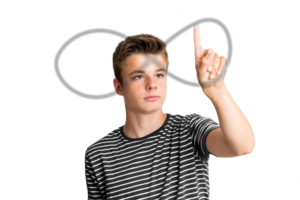ABC of how to use Educational Kinesiology/ Brain Gym with athletes and sports performers
Example:
An athlete or sports performer is struggling with a skill or performance
Start by saying we are going to use Educational Kinesiology techniques to improve your performance
Noticing
Observe the athlete's movements carefully, paying attention to both what they are doing well and what they need to improve on. Encourage the athlete to also observe their own performance and give it a mark out of ten.
Goal
Create a specific and achievable goal with the athlete or sports performer. The goal should be in the present tense and framed as if it has already been achieved. For example:
I execute the perfect triple axel jump
I consistently hit the target with my serve
Or I can
I can maintain proper form throughout the race
Brain Gym Exercises
Incorporate Pace Brain Gym exercises, which are part of Educational Kinesiology, into the athlete's training.

Brain Button Positions as shown in the video
Lazy 8s
You may wish to add lazy 8s

Lazy 8s is a simple exercise that involves tracing a figure 8 pattern in the air with one hand while keeping the other hand on the opposite side of the body. The exercise is performed while standing or sitting and can be done with either hand. The movement is repeated several times, focusing on smooth and continuous motion.
This exercise is believed to help sportspeople in several ways. First, it can help to improve hand-eye coordination and fine motor skills, which are important in many sports. The exercise can also help to improve balance and spatial awareness, which can be particularly useful for athletes who need to navigate complex environments, such as basketball players or soccer players. Additionally, the exercise may help to improve focus and concentration, which can be beneficial for athletes who need to stay mentally alert and focused during a game or competition.
Overall, while the effectiveness of Brain Gym and specific exercises such as Lazy 8s is a subject of some debate among researchers, some athletes and coaches may find them to be useful tools for enhancing cognitive and physical performance.
Notice the Difference
After the exercises, have the athlete observe and compare their performance to their established goal. Notice any improvement and have the athlete give themselves a mark out of ten to gauge their progress.
Celebrate Improvement

Celebrate any improvement with the athlete, just as you would celebrate with a young child.
Make the sound of excitement, like "Woo-hoo!" or "Yay!" Do this again twice
This helps to anchor positive emotions to the progress made, and reinforces the belief that the athlete can achieve their goals. The more extravagant the celebration, the stronger the emotional anchor and memory.
I use the PACE at the start of all my training sessions to create rapport
At the beginning of my training sessions, I often employ the Brain Gym PACE technique to foster physical and mental coordination. This involves performing exercises and setting goals together (which can be omitted if not yet established). By mirroring the performer's body language which you do by facing each other during PACE exercises, a rapport and connection can be created. This, in turn, can establish trust and open lines of communication
